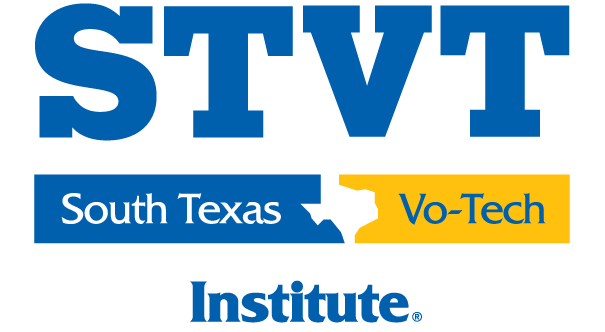Clinical medical assistants are the backbone of the healthcare industry. Clinical medical assistants are specialized healthcare professionals who focus on clinical tasks and direct patient care, while general medical assistants may have a broader range of responsibilities. Both medical assistants are part of the healthcare team, supporting patient care and keeping things running smoothly.
Clinical medical assistants work in various healthcare settings, including physicians’ offices, doctors’ offices, hospitals, and outpatient clinics. The doctor’s office is the primary setting where clinical medical assistants support physicians and patients. They are the assistant to the primary physician and make sure everything runs smoothly during patient appointments.
In this blog, you can learn about the day-to-day activities of a clinical medical assistant and how they are the link in healthcare. We outline the main duties and job responsibilities of clinical medical assistants, including how medical assistants complete administrative and clinical tasks such as scheduling appointments, taking vital signs, and supporting patient care.
The Day-to-Day Clinical Duties of a Clinical Medical Assistant
A clinical medical assistant’s daily work is varied and can include several skill sets.
Clinical medical assistants are the liaison between patients and physicians, in addition to handling patient-specific administrative tasks or general healthcare office duties. They may also be responsible for seeing patients before the physician and preparing them for exams. Other clinical skills include but are not limited to:
- Assisting the physician during the exam
- Taking health histories
- Collecting and preparing lab specimens
- Drawing blood
- Recording patients’ vital signs
- Taking blood pressure
Direct patient care is a big part of these clinical tasks, making sure patients get hands-on support during their visit. In addition to patient-facing tasks, clinical medical assistants may be responsible for many other things throughout the day. These could be administrative and clinical tasks, general office duties, or clinical laboratory work.
Administrative Duties in Clinical Medical Assisting
Administrative duties are a big part of the clinical medical assistant’s role as they help ensure medical facilities run smoothly and patients get timely and effective care. Medical assistants complete administrative tasks like scheduling appointments, updating and maintaining medical records, and processing insurance claims. These tasks are essential to keep patient information organized and accessible which directly supports healthcare providers in delivering quality medical care.
Accurate documentation of medical histories and patient care is crucial for communication among healthcare providers and continuity of care. By managing these administrative tasks, clinical medical assistants allow physicians and nurses to focus more on direct patient care which ultimately improves patient outcomes.
In addition to behind-the-scenes work, administrative duties often include greeting patients, answering phone calls, and assisting with check-in procedures. These tasks require strong interpersonal skills as clinical medical assistants are often the first point of contact for patients entering a healthcare setting. Building trust and rapport with patients not only enhances their experience but also contributes to a positive and efficient healthcare environment.
Through their combined clinical and administrative work, clinical medical assistants support both patients and healthcare teams.
Why Become a Clinical Medical Assistant?
Becoming a clinical medical assistant has many advantages. To name a few: it’s a job where you can specialize in a field you love; the training program doesn’t require a huge time commitment; there may be government financial aid available for those who qualify; and it’s an opportunity to advance your education.
Within the job, there is room for growth in healthcare. Many people move into nursing after a few years as a clinical assistant. Additional schooling and certifications are required. On-the-job training can also help clinical medical assistants transition to other healthcare facilities, like assisted living facilities, where they can take on new job duties and further expand their career options.
After gaining experience as a clinical medical assistant, people can continue in their desired field in healthcare.
The Education: Allied Health Programs
The general responsibilities of a clinical medical assistant include multiple tasks and the ability to transition between several projects while providing great patient care. Medical clinical assistant programs are offered at vocational schools and community colleges and a high school diploma is usually required for admission.
The admission process involves submitting an application, transcripts, and meeting any program prerequisites. Clinical medical assistant programs take about one year to complete. Upon completion of the program, candidates can sit for a certification exam.
Our Medical Clinical Assistant program includes training in both administrative and clinical to prepare students for a certification exam. Our curriculum focuses on preparing students for everyday tasks and situations in the healthcare workplace, and the externship portion of the program provides real-world experience in a healthcare setting. Students learn medical terminology and gain practical experience through a practicum.
Students can train in these skill sets:
- Body systems
- Pathology
- Insurance billing
- Clinical foundations
- Office systems
- Coding
- Clinical specialties
- Practical computer applications.
Some programs offer an associate’s degree or associate degree as part of the educational pathway, which can further enhance employment opportunities. Two-year medical assistant programs usually lead to an associate’s degree. Our program emphasizes hands-on learning for patient and workplace safety while preparing you to be a skilled healthcare team member in 13 months.
What Makes a Clinical Medical Assistant Successful?
Common skills for candidates pursuing a career as a clinical medical assistant are being a great communicator, especially in a high-stress environment, and maintaining attention to detail. As a liaison between healthcare team members and the patient, it’s very important for the clinical medical assistant to be able to communicate clearly and concisely between both parties.
Additional attributes include organizational skills and the ability to switch between administrative work for one patient and then attending to another patient waiting to get their medical history taken before an exam.
Start Training To Be a Clinical Medical Assistant in Texas
If you’re ready to start your journey as a clinical medical assistant in Texas there are clear steps you can follow to launch your career. Begin by researching accredited medical assistant programs offered by community colleges, vocational schools like STVT, and health education schools throughout Texas.
These programs are designed to provide comprehensive training in both clinical procedures and administrative duties so you’re well-prepared for the demands of the job. Medical assistant programs cover medical terminology, clinical procedures, laboratory tests, and administrative skills. Hands-on training is a big part of it, where you practice taking vital signs, drawing blood, and performing basic laboratory tests in real-world settings. This practical experience is invaluable in building your confidence and competence as a clinical medical assistant.
After you graduate you can pursue certification as a certified clinical medical assistant (CCMA) by passing a certification exam administered by organizations like the American Association of Medical Assistants. Getting certified shows your expertise and commitment to the profession and makes you a strong candidate for positions in physicians’ offices, hospitals, outpatient clinics, and other healthcare settings.
Learn more about our program and your future as a clinical medical assistant.
Disclaimers: Information within this blog is for general information purposes only. South Texas Vocational Technical Institute does not assume or guarantee certification/licensures, specific job/career positions, income earning potential, or salary expectations based on the programs offered at South Texas Vocational Technical Institute. Career and program information statements in this blog do not guarantee that programs or other information mentioned are offered at South Texas Vocational Technical Institute.




